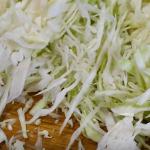Among the numerous products intended for painting walls, water-based paint occupies a special place, specifications which provide reliable, beautiful and safe surface coating. There are three main types of water-based paints:
- polyvinyl chloride;
- latex;
- acrylic.
The first type is used for painting dry rooms, the last two - in rooms with high humidity. Painting the walls water-based paint helps create a harmless, durable film that allows air and water vapor to pass through, that is, the wall “breathes.” More details about the composition and benefits of this material
Proper painting of walls with water-based paint
The surface of the wall that will be covered with water-based paint must be carefully prepared and primed. It must be perfectly smooth, without dents or scratches, since after painting the wall, especially with glossy paint, all imperfections will be especially noticeable.
To paint walls with water-based paint you will need the following set of tools:
- paint roller with replaceable attachments;
- flute brush;
- mixing bucket;
- tray (bath) for paint.
It is advisable that a thixotropic water-based paint be selected for painting, the technical characteristics of which ensure that there are no drips on the walls. This paint adheres well to a fleecy roller and brush without dripping from them. Before starting work, you should check the quality of the brushes and roller, which should be clean and free of residues old paint. New brushes should be checked by pulling the bristles: they should hold tightly. If the tools are of poor quality, then painting with water-based paint will not give the desired result: stains from the lint brushes will remain on the walls. Since painting walls with water-based paint should give them desired color, then the paint is pre-tinted. Bought for this purpose white paint pour into a plastic bucket, add water if the paint is too thick, stir thoroughly using a drill attachment, adding the selected coloring pigment.
Water-based paint can be applied to walls with a brush, roller or spray gun. In most cases, a paint roller with various attachments is used for painting, creating a textured surface. The walls are painted from top to bottom using a paint roller. The width of the vertical strip should be about 0.5-0.7 meters. Each subsequent stripe should overlap slightly with the previous one, by about 7-10 cm. We recommend water-based paint whose technical characteristics show good hiding power.
To obtain an evenly painted surface, the wall should be painted quickly, so that the new strip does not meet the strip of already dried paint. In one pass, the roller should cover an area of about one square meter. To achieve an even color, one wall should be painted in one go, without interruption. For an even, high-quality coating, two layers of paint should be applied. The second layer is applied after the first has completely dried.
Are you tired of your monotonous apartment interior? Do you want to transform it, refresh it and create something extraordinary? Luckily for you, there are many options for decorating a living space. One of them is quite effective - decorative painting of walls with your own hands. Thanks to it, you can change the design of your home beyond recognition. There are many techniques that can help you create a unique pattern and texture on your walls.
It is clear that it is difficult to call the process easy. But if you have the appropriate instructions, tools and materials, as well as the right attitude to work, then you can do without specialists. Let's find out how to paint walls in a decorative way with your own hands.

Features of decorative painting for walls
What is the difference between regular wall painting and decorative painting? The differences are quite noticeable. Regular painting will simply transform your wall into a different color. And if we talk about decorative painting, then a unique pattern, structure and shape are created on the surface, along with coloring. Let's look at the benefits of decorative painting for walls.
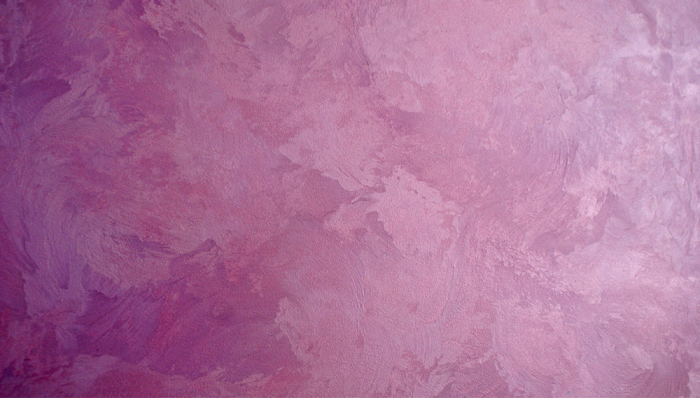
Advantages of paint:
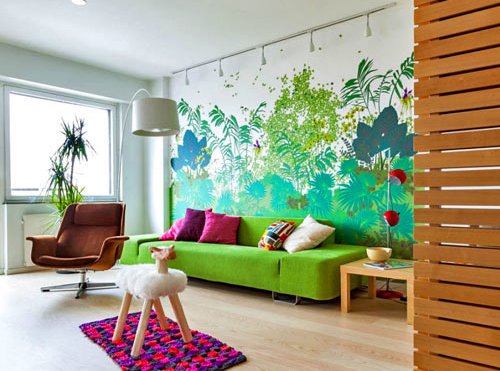
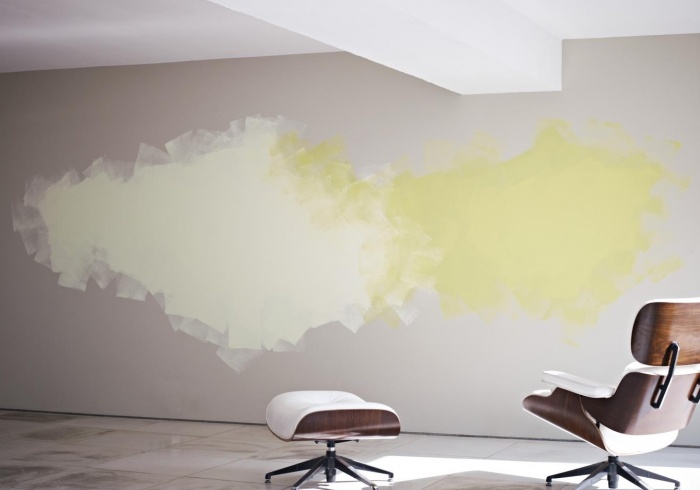
As you can see, there are a lot of advantages of the material. But decorative paint also has its drawbacks. There are very few of them, but they are there:
- You will need to carefully prepare the walls for painting yourself. Next we will take a closer look at what is included in such preparation;
- when compared with regular paint, then the price for decorative compositions a bit higher. Sometimes you will see a price tag of about 1000 rubles per 1 kg of material. Although there are cheap options, 300-400 rubles each, they are not of such quality.

If we understand the description of decorative paint, let's look at the technology of work to change your house or apartment beyond recognition.
Stage 1 - preparatory work
As you already understand, there is nowhere without this process. It is clear that any finishing requires high-quality preparation. Therefore, you should not think that you will do extra work. If you neglect this, the service life and quality of the finished surface will be low. What is included in preparing walls for painting?
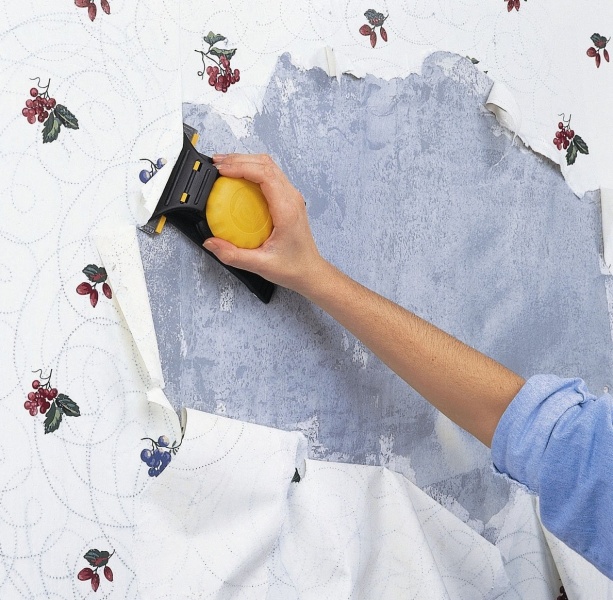
First you need to assess the condition of the walls. How smooth are they? Are there any cracks, pits or other defects? Do they have old finishing material? All this will need to be fixed. Old finish remove it to the ground, it will only get in the way. As for cracks and defects, they can be repaired. For this purpose you will need putty. It can hide all defects.

In the case where the differences in the wall are more than 20 mm, you need to putty the walls before painting to level the surface. Indeed, as a result, all irregularities will be clearly visible. All you need is to buy putty, stock up on spatulas, a rule and a level. Thanks to them you can achieve a perfectly smooth surface. Learn more about how to putty walls for painting in this video.
Advice! Immediately before painting, you should treat the surface with a primer, which will ensure better adhesion.

If you are working indoors with all the decorative elements and furniture, protect them or even remove them while the work is being done.
Stage 2 - apply a decorative layer of paint
All you need for the job is the selected paint and tools for creating texture and patterns. Rollers are very good for decorative painting of walls. Thanks to its shape and unusual roller, it turns out original drawings and patterns. But, you can use a brush, sponge, rag, or lint roller. It all depends on the application technique, of which there are quite a few. Let's look at the common options.

Dry brush method
First, apply the paint evenly to the wall using a regular roller. Please note that the paint tone should be lighter. Wait until the layer is completely dry. Next, with chaotic movements, using a brush, cover individual areas of the walls with paint of a different shade. For example, you can use metallic paint, gold, bronze or silver. The result of the work is visible in the photo below.

Paint rubbing method
The work is quite simple, you can do it yourself. It is enough to apply the composition to the wall, then rub it with a special mitten or sponge. This way you can get an interesting pattern and soften the color contrast.

We imitate Venetian plaster
Here you need two shades of paint. Divide it into two parts, add dark dye to one of them. Everything is ready to go. Apply paint in layers, alternating tones. All that remains is to shade the finished coating to make everything more harmonious. Use a spatula to move along the wall from one side to the other.

Using a rag roller
Thanks to this method, you can not only get an interesting range and pattern, but also hide defects in the surface of the walls. The work is simple: apply decorative paint of a certain color to the wall. Take a rag, make a roll out of it, twisting it into a rope. Lightly dip a homemade roller into paint of a different color, and then begin to form patterns on the surface.
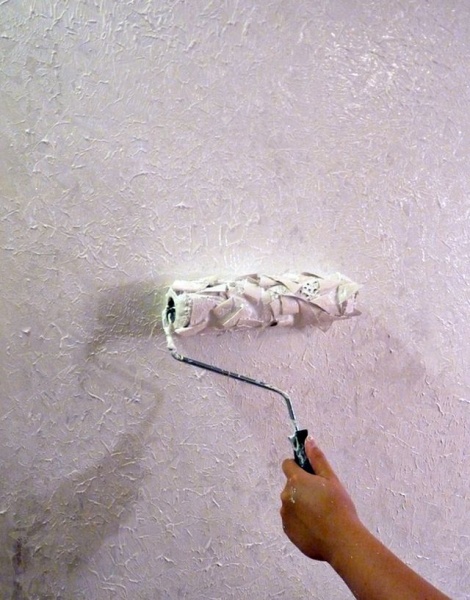
Note! To achieve a harmonious coloring, alternate the direction of movement and rotate the roller at different angles.
Using textured rollers
One popular option is to use textured roller. It has a rubber surface with a printed pattern. All you need to do is apply paint to the walls, and then treat it with one of these rollers. The pattern will be painted in a different color. These photos show what the finished result will look like.
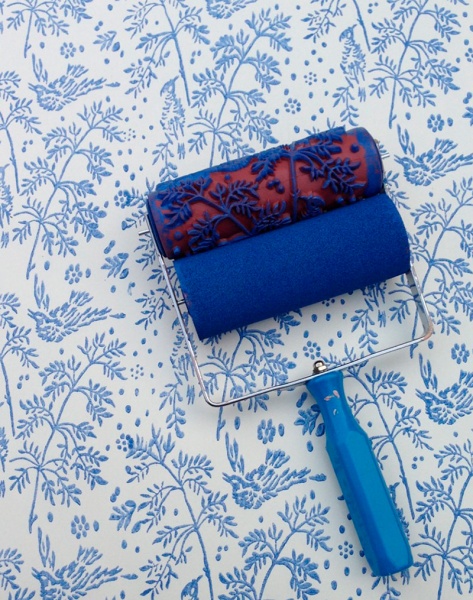
In this case, there are rollers that paint the drawing in specific color, and there are also those who simply make a certain pattern on the surface. For clarity, pay attention to this photo.
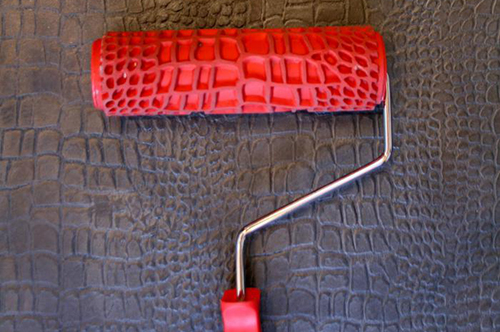
Let's sum it up
These are not all the methods you can use to transform your living space. You can use a regular comb to create lines, a wide brush to create a rain effect, and use stencils to create unique patterns. Here your imagination can run wild. This once again proves that decorative painting of walls is great way room decoration. You can make it whatever you want. And since the life of the paint is quite long, you will enjoy your creativity for a long time!
Many people think that painting walls with water-based paint is a simple task. But this is far from true. In order to carry out high-quality finishing of the room, you need to familiarize yourself with some rules. This applies not only to the application of the substance, but also to surface preparation, selection of material and tools. Today we will look at how to paint walls with water-based paint, photo ideas and room design. But, most importantly, we will tell you how to do it yourself.
Today, substances are used less and less frequently oil based. This is due to the fact that they have many disadvantages, including toxicity, fragility and low vapor permeability. They were replaced by water-based emulsions, which can boast of their significant advantages:
- quick drying;
- absence of odor and toxins;
- a wide range of;
- ease of application.
Water emulsion is an aqueous emulsion of polymer dyes that contains various additives. They give the substance elasticity, strength and other positive traits. Today there is a wide range of such materials on the market:
- Acrylic. Acrylic based material has high quality, which is what the price corresponds to. To increase elasticity, latex substances are added to the paint. It can be used to finish almost any surface. The coating is highly resistant and easy to clean.
- Mineral-based materials are mainly used for painting ceilings and concrete that are exposed to high humidity. Of course, recently the demand for them has decreased significantly, which is explained by the emergence of more modern materials.
- Silicate paints are a liquid glass emulsion containing colored pigments. The substance is well resistant to atmospheric influences and has high vapor permeability. Widely used for coating plastered, concrete and brick structures. Not suitable for finishing apartment premises with high humidity.
- Silicone resin based paints are used for finishing various surfaces. Easily hides small irregularities and after drying creates a water-repellent film.
How to choose the right water-based paint
Given the availability of such a wide range, choosing a finishing material is a very difficult task. Therefore, when choosing, you should be guided by the following tips:
- For walk-through rooms and rooms with high humidity, latex, silicone and acrylic paints. They are easy to clean and are not afraid of water.
- It is better to purchase materials in specialized stores, which will avoid low-quality fakes.
- High-quality water emulsions have White color. You can change the shade using dyes.
- It is better to prefer a product from manufacturers who have proven themselves construction market, especially in this area.
After visiting the store, you should seek help from a consultant. He will help you choose best option for finishing a particular room.
Important: before going to the store, you need to calculate how much dye you will need for the work.
Choosing a painting tool
The quality of wall painting depends not only on the material, but also on the tool. To do the job you will need a roller and a brush. Using the first tool, you can evenly apply paint to the surface. The brush is used in those places where working with a roller is difficult. This applies to joints and edges of walls. Also in some cases a sponge is used. It allows you to create a decorative effect.
When choosing a tool, you should pay attention to the following factors:
- For processing large area It is recommended to use a roller with a removable coat. When choosing a fur coat, it is worth considering the condition of the surface. If it is smooth, then it is better to use a short-haired roller. A spray gun would also be a good idea. With its help you can quickly cover a large area.
- Textured and uneven surfaces with a pattern are covered with fleecy sheepskin rollers.
- In the upper areas it is better to use a tool with an extended handle, which will greatly simplify the process.
- It is not advisable to use a roller that has a foamy structure, as it leaves air bubbles after coating.
- The bristles on the brush should be thick and long. After bending, it should easily return to its original state.
- To treat corners, use brushes 5-15 cm in size.
In addition to the basic tools, to finish a wall with water-based emulsion you will need putty, a spatula, a primer solution, a paint tray and a container for diluting it.
Preparatory work
An important stage of painting is preparing the wall surface. It should be as smooth as possible, which will allow for high-quality finishing of the wall. During the preparation process it will be necessary to perform a number of works:
- Remove the old coating and thoroughly clean the wall of dirt. Mile water is widely used for this purpose. If we're talking about about wallpaper, you can moisten it with a vinegar solution. After soaking, the old finishing material is easily separated from the wall.
- When the wall is dry, you need to carefully inspect it for defects. All cracks and depressions are sealed with gypsum putty. If it is necessary to level the base, it is better to do this with alabaster putty.
- Do I need to prime the walls before painting? Yes, as this allows you to strengthen the base and reduce the consumption of finishing material. This work must be done immediately after the surface is leveled.
All that remains is to empty the room of furniture and other interior items. This will protect them from contamination and create optimal conditions for high-quality and quick finishing. Bulky furniture that could not be removed should be placed in the center of the room and covered with oilcloth. It is also advisable to cover the floor.
The paint must be mixed in advance. Before diluting it, you must carefully study the instructions on the packaging. To color the substance, pigments with the appropriate shade are used. The diluted paint should be enough to cover all surfaces.
Painting the walls
Once the surface of the walls has been prepared for work and all the furniture has been removed, you can proceed directly to painting. The work is performed in the following sequence:
- A little paint is poured into the prepared tray. If you pour a lot, the substance may splash during operation.
- Using a brush, paint the perimeter of the wall. After this, you can pick up the roller.
- The roller dips into the paint. He should be well saturated with it. After this, pass it several times along a special area in the pallet. If it is not there, then you can use any clean surface. This will allow the pile to be evenly saturated.
- It is better to start painting the wall from the top. This will prevent the formation of streaks and drops.
The paint is applied in two or three layers. This allows you to create a high-quality and aesthetic coating. Before applying the next layer, you need to make sure that the previous one dries out somewhat. Otherwise, problems may arise, resulting in a decrease in the quality of work.
While the paint is drying, you need to make sure that there are no drafts. Otherwise, the coating may dry unevenly and reduce its quality.
- After completing the work, the paint container should not be thrown away. It is necessary to record the brand and type of dye. If you need to touch up damaged areas, this will make it easy to purchase identical paint.
- Painting plasterboard surfaces should begin with a moisture-repellent primer. This will protect the structure from negative factors external environment, this is especially true for moisture.
- You can check the quality of the dye at home. The substance is applied to the sample. After this, it is given some time to dry. After this, the sample is placed under running water. If the emulsion is washed off or cracked, then it is classified as a non-waterproof dye. This means that it is not advisable to use it for finishing bathrooms and kitchens.
- If the emulsion is used in a bath or indoor swimming pool, ensure that there is effective ventilation.
- The surface of the wall is covered at a time. If you do the work in parts, it will negatively affect appearance finishing.
- If the first layer is applied vertically, then the second layer is applied horizontally. This will create a high-quality and aesthetic coating without any streaks.
Following these simple rules will allow you to easily and efficiently complete Painting works without the involvement of specialists. Below is a video that will show how easy this work is.
Water-based wall paint has characteristics that allow you to achieve high results from painting the walls in your apartment. For any room you can choose suitable look paints. For example, in rooms with high humidity It is recommended to use acrylic water-based coatings. To paint the walls in the apartment, polyvinyl chloride paints are also used, suitable only for dry rooms.
There are many ways to decorate walls and ceilings, and water-based paint is so harmless and breathable that it can be used in the kitchen and living room interior. If you properly prepare the surface and mix according to the instructions water-based coating with color, painting walls will not be difficult even for a beginner.
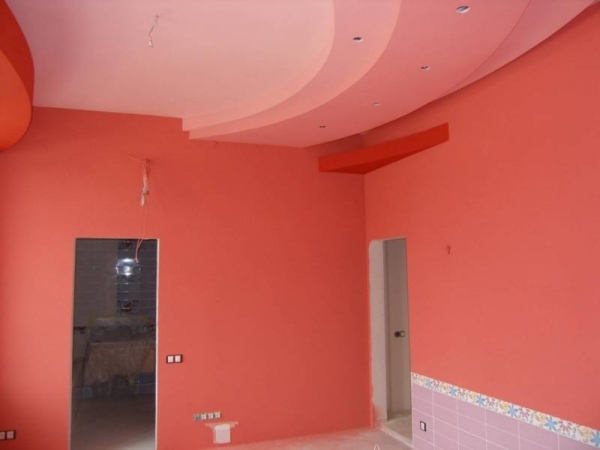

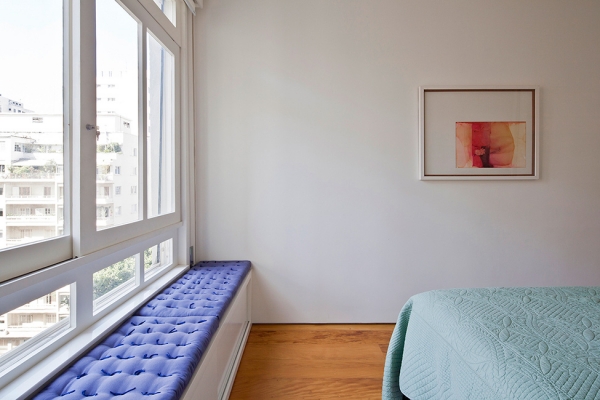

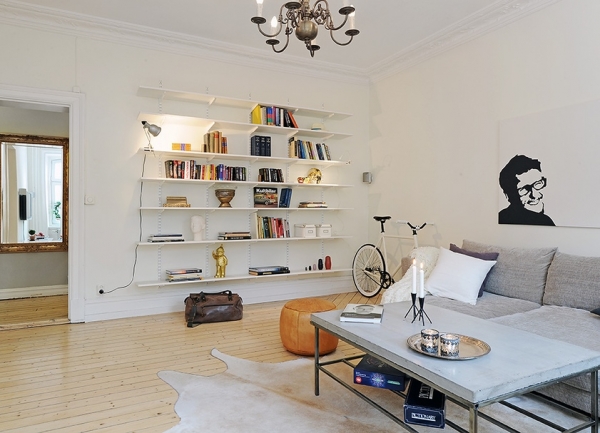
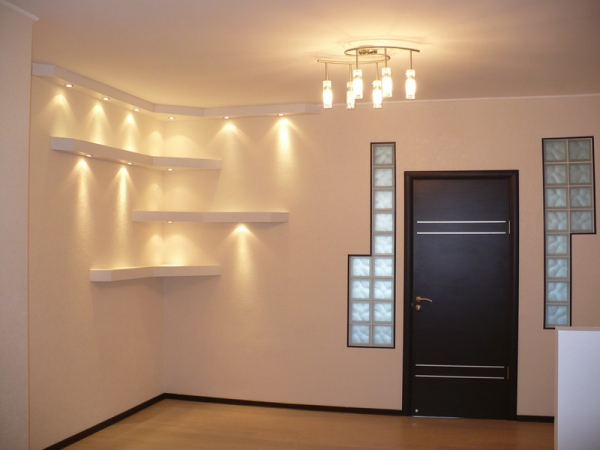

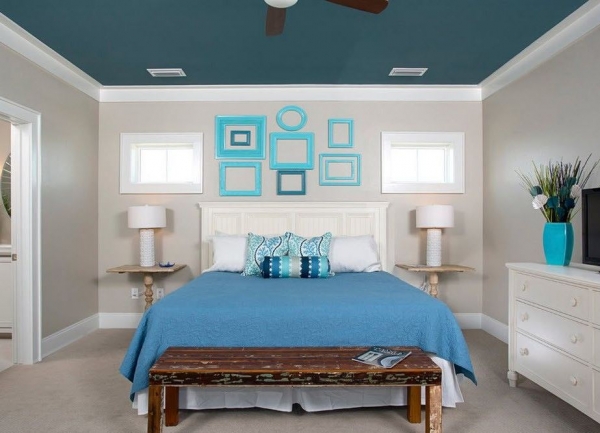

Preparation before painting
The process must begin with surface preparation. To do this, the walls in the apartment must be primed and puttied. Apply water emulsion to uneven wall it is forbidden. The only exception is textured painting, but most often a simple glossy finish is used in repairs.
Make sure in advance that the paint does not leave streaks. You can check it by dipping a brush into the product. Good paint It won't drip, but the quality of the brush also matters.
You only need to use a clean brush or roller. The pile should not come out or crumble. Perfect option- fur roller. It colors the surface evenly, the product adheres well to it, and there is no lint left on the wall.



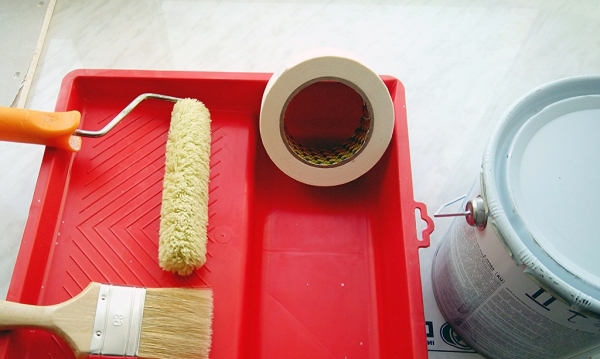



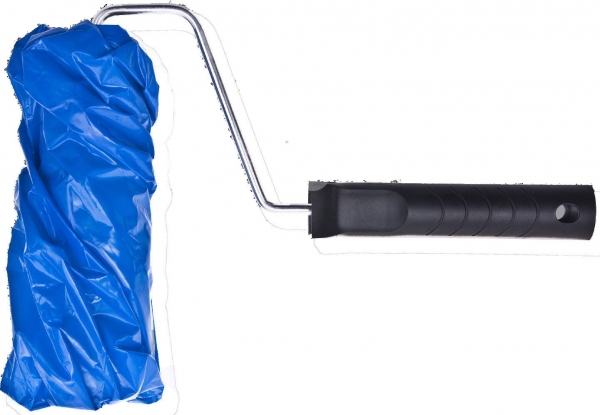


To paint the walls in your apartment you will need both a roller and a brush. If you wish, you can use a spray gun, but for a beginner it is better to use a paint roller.
To prepare water-based paint you will need:
- Water;
- White water-based paint;
- Color;
- Construction mixer.
First you need to mix water with white paint and achieve a uniform consistency. For mixing, use a mixer or a special whisk, but in some situations it is permissible to mix with your own hands. The paint is absolutely harmless to the skin, so there will be no harm from getting it on your hands. But it is more convenient to use construction tools designed for mixing.
Then you need to add color to the white base. It can be any color.
When adding color, two things must be taken into account: the final mixture must be uniform in color and without streaks, and its quantity cannot be less than what is required at one time.It is impossible to create an identical color for painting a second time.
Painting walls with water-based paint
After preparing the walls for painting, you can begin the main process. Water-based paint should be applied in two or three layers with a roller or brush. Various attachments are sold for the roller, some of which will help you achieve the effect of a rough wall.

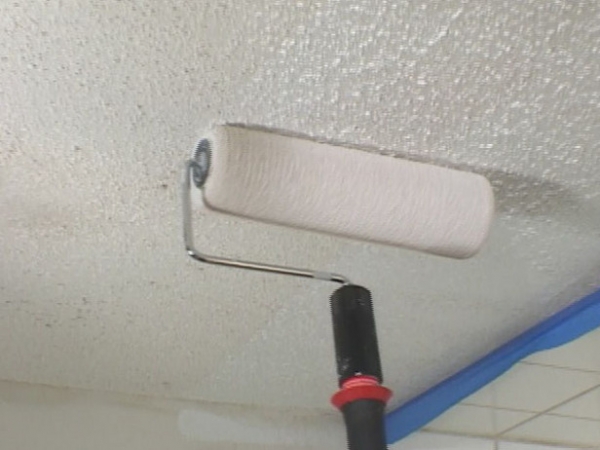



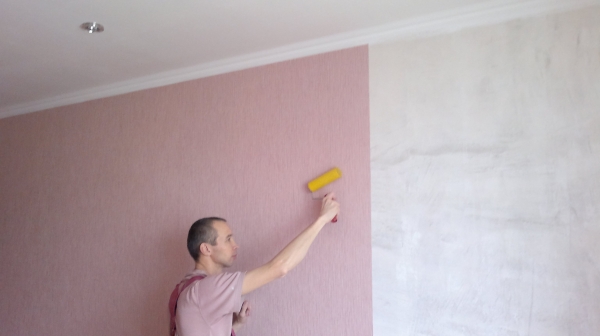



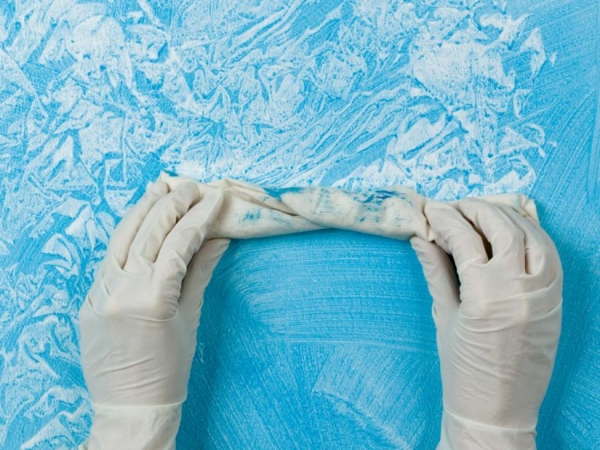
Wallpaper in an apartment should be painted in three layers. For a smooth prepared wall, two applications are sufficient. Horizontal strokes should be alternated with vertical ones. Last layer Paints should be applied with a roller only vertically.
Water-based paint is convenient for finishing, but it must be applied very quickly, without allowing the previous stroke to dry. Photos of wall painting confirm that delay can lead to uneven color on the surface, which greatly spoils the interior. Since the room must be painted at least twice, the second coat can be done only after the previous layer has completely dried.



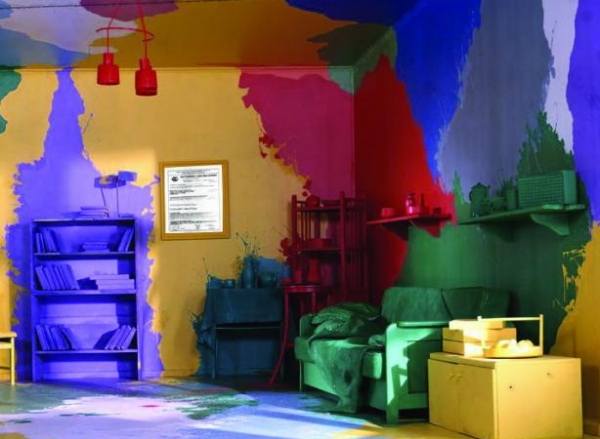

![]()




To paint walls with water-based paint, you need a small amount of mixture.
To paint the walls in small room, 10 liters of paint is enough.You can cover the ceilings and walls throughout the apartment: in the living room, in the kitchen, in the bedroom. You can't skimp on quality finishing materials. A budget option often spent in more, and the finishing result does not meet expectations.
Even when using a roller for painting, do not ignore the brush. You will need it when you have to paint over it. hard to reach places in the apartment. These are corners, niches, surfaces behind radiators.
Water-based paint is used to create modern interiors. Ways to achieve interesting design there is a lot in the apartment, but with the help of this paint it is easier to create unique design independently and in a short time.
Design ideas
For interior design, you can use either one paint color or several. The simplest design option is to paint the walls with water-based paint of the same color. This method of finishing will not look boring if you play with color and shade saturation.
Painting surfaces in different colors decorates the interior without overloading it. Accent design is used in the kitchen and living room to zone the space or simply dilute calm tones with a bright spot.




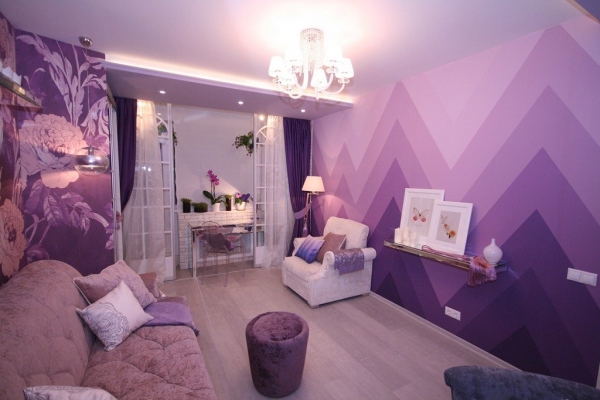

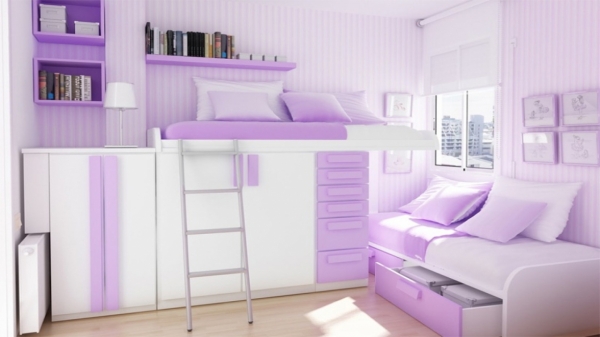


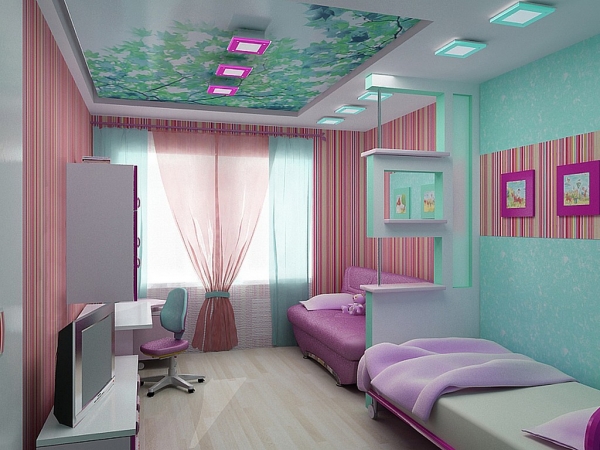
Unusual wall decor can be created by simulating the presence of colored panels. Painting is carried out in several stages:
- First, the wall must be completely painted in one color;
- When the surface is dry, future “panels” of various shapes should be marked on it;
- Using water-based paint of a different color, preferably a contrasting one, you should paint over the selected areas over the first layer of paint;
- After drying, you can use additional decor to highlight the design of the colored inserts.
For interior design, dividing the wall in two is also used. different colors. The line where two different colors covered with planks and borders; almost any materials are suitable for decoration. With their help, you can not only decorate the interior, but also hide the results of unsuccessful painting of walls with water-based paint.
To avoid small mistakes in horizontal painting, it is recommended to use tools and devices that will help draw a straight line.
Striped walls are a bolder finishing option. It is often used in the living room and kitchen. The children's room is also transformed by the presence of bright stripes in the interior. You can draw stripes horizontally or vertically, any colors will do.






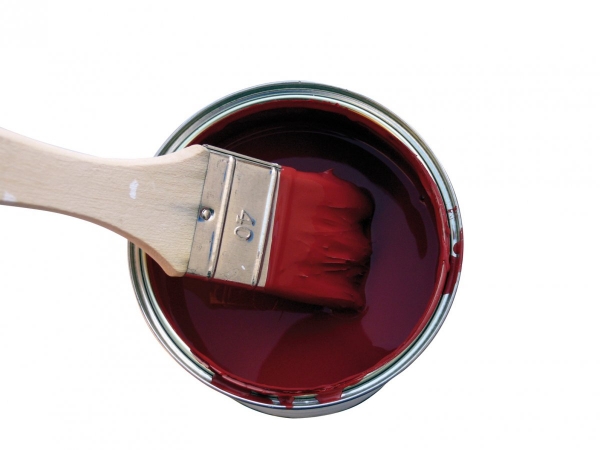
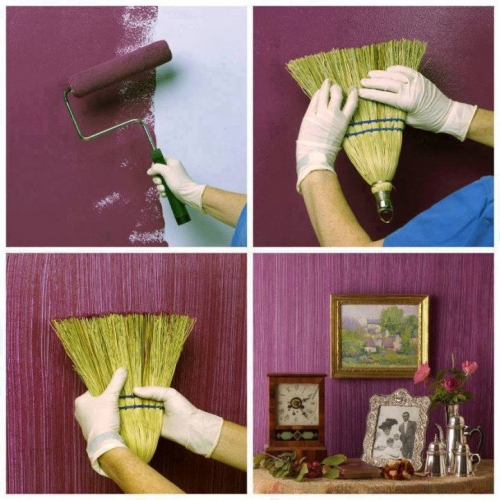
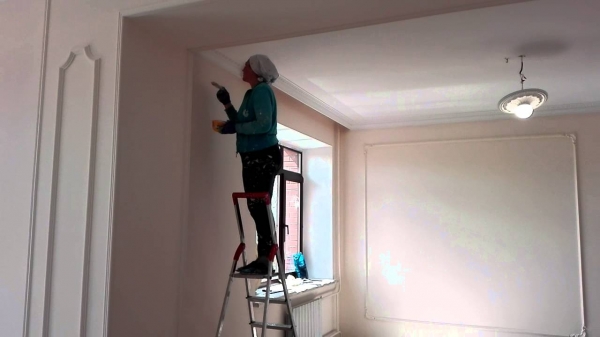

It is better to stick with wide stripes, as narrow ones are more difficult to apply with a roller yourself, and painting will take a lot of time. The end result of finishing with narrow stripes is not always pleasing, since they are only visible up close, and from the outside the surface appears blurry.
Unusual painting ideas
There are more extravagant and modern methods interior decoration in the apartment. For finishing of increased complexity, you will need special skills, accurate calculations and care. For example, to paint checkered kitchen walls yourself, you will need to apply the paint over the dry layer several times, using a building level and masking tape.

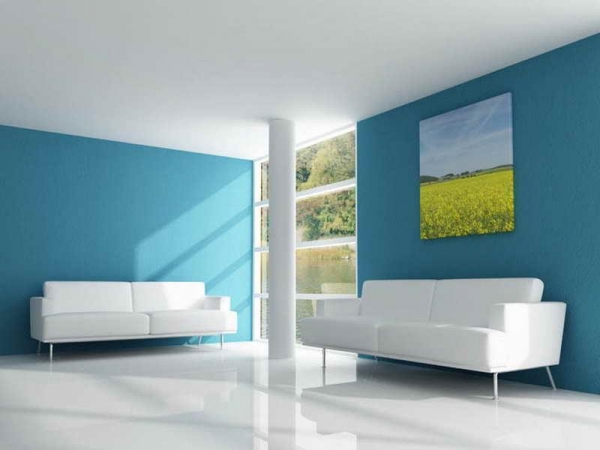








Patchwork style decor also looks great in the kitchen and living room. Decorating a room in this way is a little easier, since the squares are large in shape and can be easily painted using a paint roller. But before finishing begins, preparation will still be required: in order to evenly apply water-based paint, you need to mark the wall.



